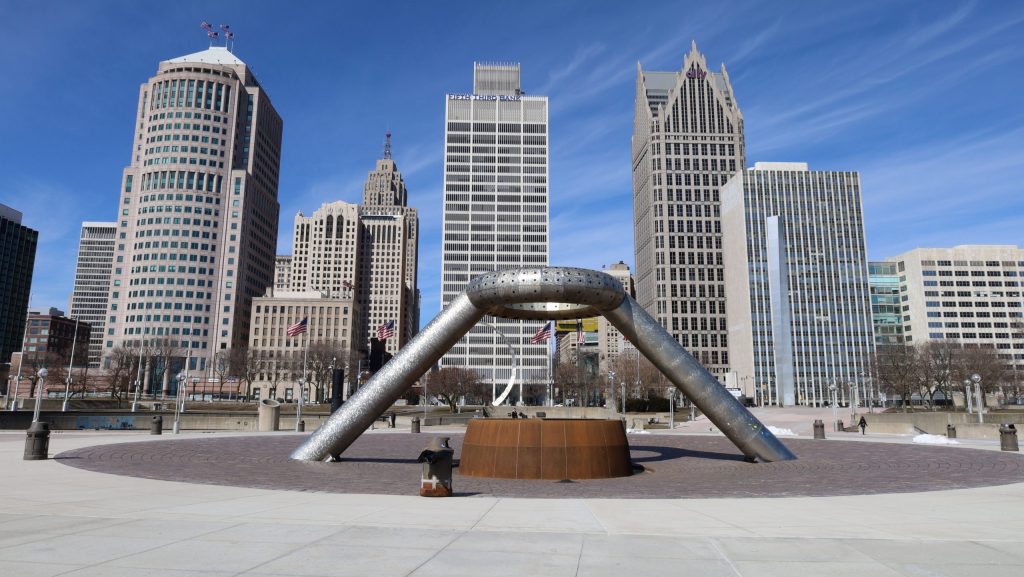Created Equal: Why urban areas like Detroit are more at risk during heat waves
Justina Giglio June 20, 2024Sustainability expert Hessam AzariJafari and local forester Lawrence Sobson join the show to discuss innovative ways for Detroit to build up climate resilience.

The Detroit skyline from Hart Plaza.
A heat wave is moving through metro Detroit this week, bringing with it various health risks, severe storms and a strain on the energy grid.
Low-income and minority communities often suffer the highest risk of adverse health and financial impacts associated with extreme heat. This is because they tend to live in regions considered ‘urban heat islands,” or areas lacking natural surfaces like forests or water bodies that help to lower air temperatures. With less green space to absorb heat, urban areas become warmer than more rural areas.
In 2023, the nonprofit Climate Central found that the urban heat island effect is elevating local temperatures by at least eight degrees Fahrenheit in 44 U.S. cities — including Detroit — exposing residents to higher risks of heat-related illness and higher cooling costs.
Today on Created Equal, host Stephen Henderson was joined by sustainability expert Hessam AzariJafari and local forester Lawrence Sobson to discuss innovative ways for Detroit to make the summer heat more bearable for its residents.
For those who are struggling to keep cool during this week’s heat wave, a list of cooling centers can be found on the city of Detroit’s website.
Subscribe to Created Equal on Apple Podcasts, Spotify, Google Podcasts, NPR.org or wherever you get your podcasts.
Guests:
Hessam AzariJafari is the deputy director of the Concrete Sustainability Hub at MIT. He says civil engineers can help develop cities that make the heat less taxing on its residents.
“So the way we build our cities, it’s very important for reducing the urban heat island effects. And we can use pavements as a very good example for increasing the equity from a sustainability perspective. If you can change the way that we are designing and choosing the materials for pavements, then we will equally bring the benefits to all the citizens in that given neighborhood. And it will really influence each individual living in those areas as well,” he said.
Lawrence Sobson is the urban forester and partnership coordinator for the Michigan Department of Natural Resources. He says the economic impacts of planting the incorrect trees can lead city planners to not plant any trees at all.
“I mean, in my mind, it’s a problem of economics. Like you look at these large Silver Maples [and] you look at these invasive Pear trees, they come with a quite high cost to maintain. So the math works out, [to] just take it out. But then you have the opportunity cost of not having a tree there, and the shade it provides, and it just costs more money to put one in. It kind of fuels its own culture of not planting trees just because of the poor decisions on the species that were planted before.”
Listen to Created Equal with host Stephen Henderson weekdays from 9-10 a.m. ET on 101.9 WDET and streaming on-demand.
Trusted, accurate, up-to-date.
WDET strives to make our journalism accessible to everyone. As a public media institution, we maintain our journalistic integrity through independent support from readers like you. If you value WDET as your source of news, music and conversation, please make a gift today. Donate today »
